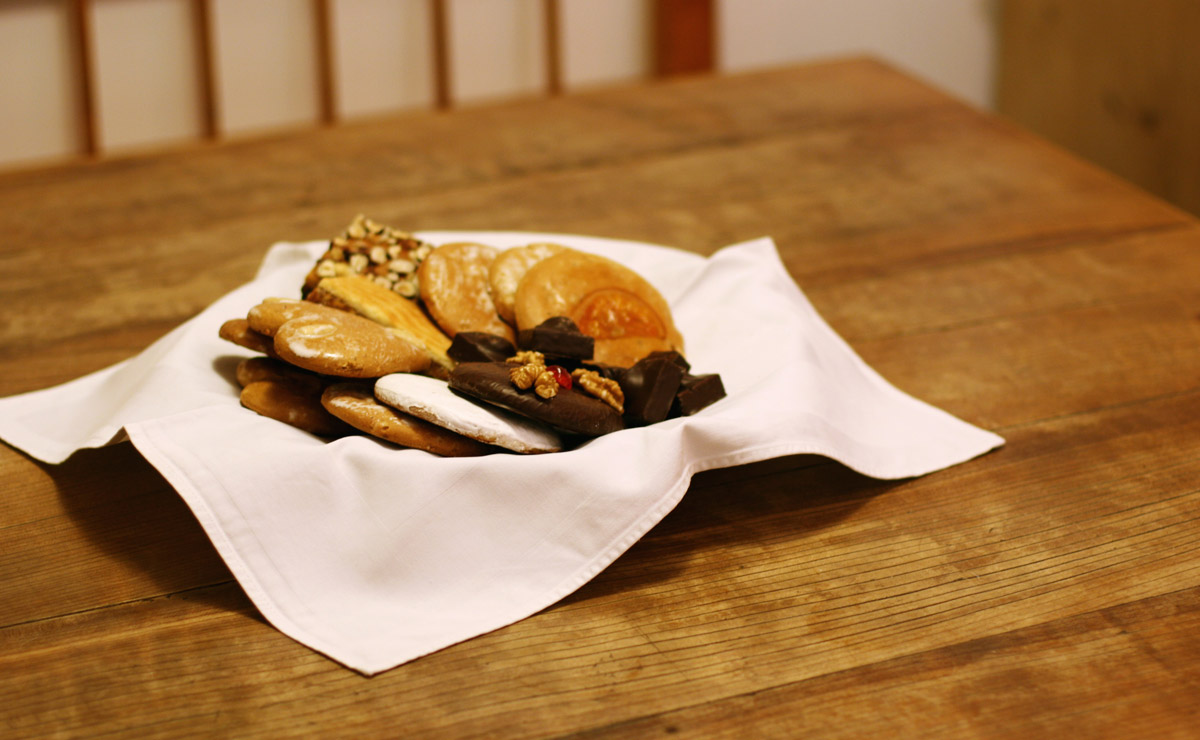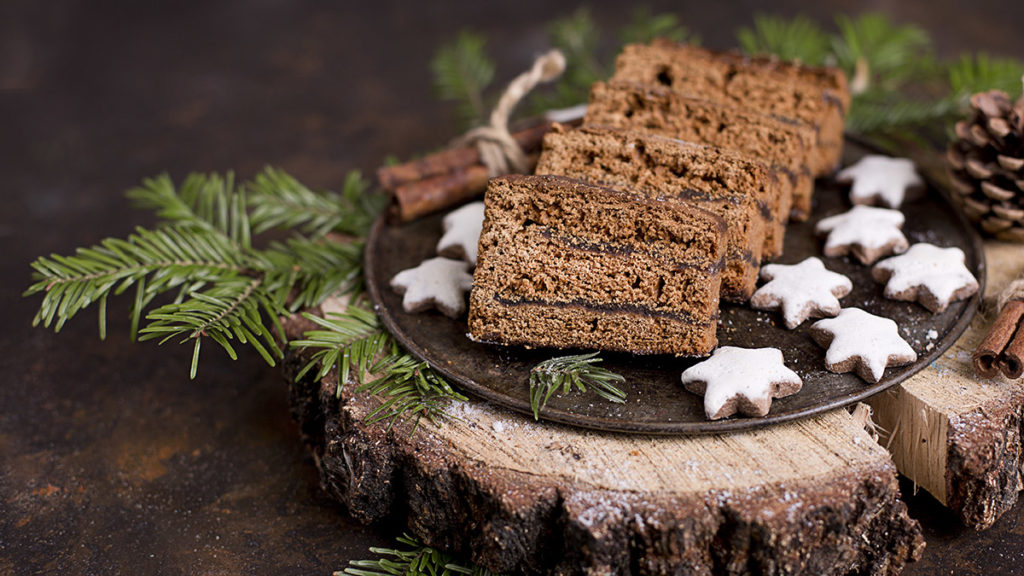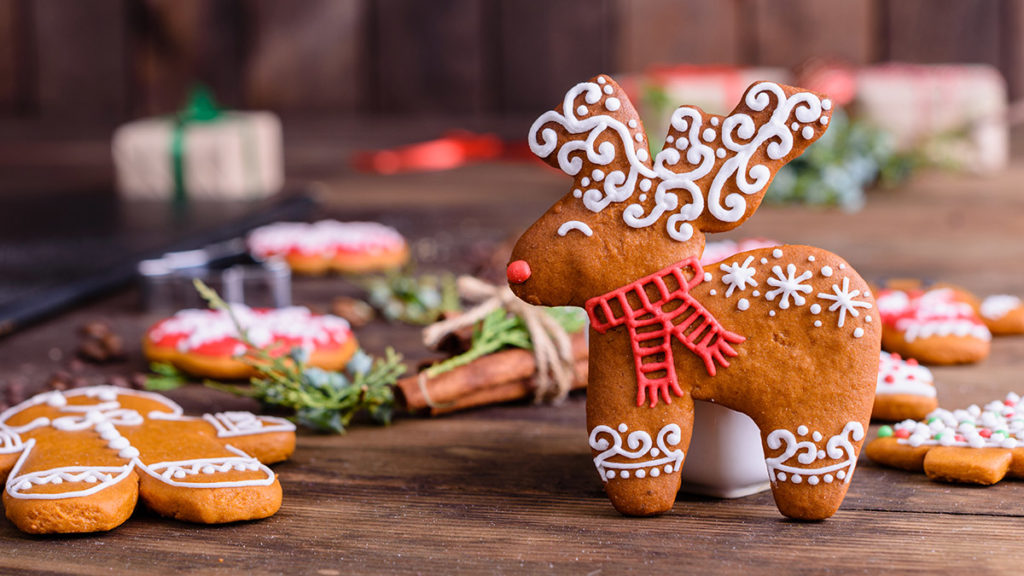The three distinct types of gingerbread are brown gingerbread, wafer-based gingerbread and honey gingerbread.BROWN GINGERBREAD.WAFER GINGERBREAD.HONEY GINGERBREAD.
-
BROWN GINGERBREAD.
-
WAFER GINGERBREAD.
-
HONEY GINGERBREAD.

The history of gingerbread houses
Historians trace the holiday custom of baking and decorating of gingerbread houses to 16th century Germany. There, elaborately decorated gingerbread cookie-walled houses began showing up in bakery shop windows.

However, it was the famous Brothers Grimm fairy tale of “Hansel and Gretel” published in 1812 that really cemented the idea of the gingerbread house in the world’s imagination. In the story, the two lost children discover a house in the deep forest that is built entirely of treats.
Fast forward 200 years, and those little houses had received major renovations.
In November 2013, a group of volunteers in Bryan, Texas, built the world’s largest gingerbread house as a way to help raise money for a trauma center at nearby St. Joseph’s Hospital.
Covering the size of a tennis court, the house required 1,800 pounds of butter, 2,925 pounds of brown sugar, 7,200 eggs, 7,200 pounds of all-purpose flour, and 1,080 ounces of ground ginger, as well as a few other ingredients. The structure had 10-foot-high walls and featured an exterior mounted over a wooden frame that could be eaten!

- The first known American cookbook, American Cookery by Amelia Simmons, which was published in 1796, included recipes for three different types of gingerbread, including a soft variety.
- Records show that George Washington’s mother, Mary Ball Washington, served her home-baked soft gingerbread to the Marquis de Lafayette when he visited her home in Fredericksburg, Virginia.
- In 1875, “The Gingerbread Boy,” the story of a boy-shaped gingerbread cookie who brags to everyone he meets that they can’t catch him, first appeared in a children’s periodical called St. Nicholas Magazine. Thus, were born the human-shaped gingerbread cookies we know and love today.
- According to a Swedish folk tradition, gingerbread man cookies can have magical powers. The custom says to place the cookie (which the Swedes call a “pepparkakor”) in your open palm and make a wish. Then, break the cookie with your other hand. If the gingerbread breaks into three pieces, your wish will come true.
- The second Saturday in December is Gingerbread House Day in the United States. This Dec. 12, get out your DIY gingerbread house kit and get decorating!
- The record for the world’s largest gingerbread man belongs to the staff of the IKEA store in Oslo, Norway. In 2009, they created a cookie that weighed 1,435 pounds, and they baked it in one piece!
The origins of gingerbread
The word “gingerbread” comes from the Old French “gigembras,” which means “gingered food.” In Middle English (which was spoken from approximately 1150 to 1450 A.D.), the term became “gyngebreed,” and that evolved into “gingerbread.” Today, we use “gingerbread” to describe a range of sweet treats that combine ginger with honey, treacle, or molasses.
Food historians trace the origins of gingerbread back to the ancient Egyptians, who used it for ceremonial purposes. The ancient Greeks followed suit with the first known recipe for gingerbread around 2400 B.C.

When trade with Asia during the Middle Ages made ginger (and other spices) accessible to Europeans — at least to the wealthy — the idea of gingerbread spread across the continent. An early European gingerbread recipe involved making a paste of stale breadcrumbs, ground almonds, rosewater, sugar, and ginger.
English recipes of the 16th century replaced the stale breadcrumbs with flour and added honey for a sweeter taste and lighter feel. Here’s an interesting side note: During this time, cooks sometimes added fragrant ginger or crumbled gingerbread to recipes to mask the smell of preserved meat.
We have monks from the Middle Ages to thank for the idea of using gingerbread for decorative designs. After creating a paste of breadcrumbs, honey, and ginger, and rolling the mixture out, the monks often carved biblical scenes or s of saints before baking it. They then used these gingerbread treats as a way to feed the hungry and offer some religious teaching at the same time.

Over time, the custom caught on, and gingerbread cookies in the shape of animals, flowers, birds, or kings and queens became a common sight at medieval fairs throughout Europe. Queen Elizabeth I even ordered gingerbread cookies made to resemble the dignitaries visiting her court.
These royal cookies often featured elaborate gold leaf designs and intricate details. We still call the fancy architectural details on Victorian-era houses “gingerbread.”
Learn about the history of gingerbread #gingerbread #gingerbreadhouse #ginger #foodhistory #holidays
FAQ
What were the cookies served at gingerbread fairs called?
How was gingerbread made originally?
What is soft vs hard gingerbread?
What is the history of German gingerbread?
What are the different types of Gingerbread foods?
Gingerbread foods vary, ranging from a moist loaf cake to forms nearly as crisp as a ginger snap. Originally, the term gingerbread (from Latin zingiber via Old French gingebras) referred to preserved ginger. It then referred to a confection made with honey and spices.
What is the difference between ginger powder and ginger root?
The main difference between natural ginger root and powdered ginger is the presentation, as they have the same properties. The powder presentation is more practical for consumption and has a longer shelf life.
Is gingerbread a sweet?
But gingerbread is just an umbrella term for a whole world of sweets. “ The Oxford Companion to Food defines it as ‘a product that is always spiced, and normally with ginger, but which varies considerably in shape and texture,’” Bilton says. As a big fan of spiced baked goods, I’m grateful that gingerbread’s family tree is so large and diverse.
What is a gingerbread cake?
Gingerbread refers to a broad category of baked goods, typically flavored with ginger, cloves, nutmeg, and cinnamon and sweetened with honey, sugar, or molasses. Gingerbread foods vary, ranging from a moist loaf cake to forms nearly as crisp as a ginger snap.
